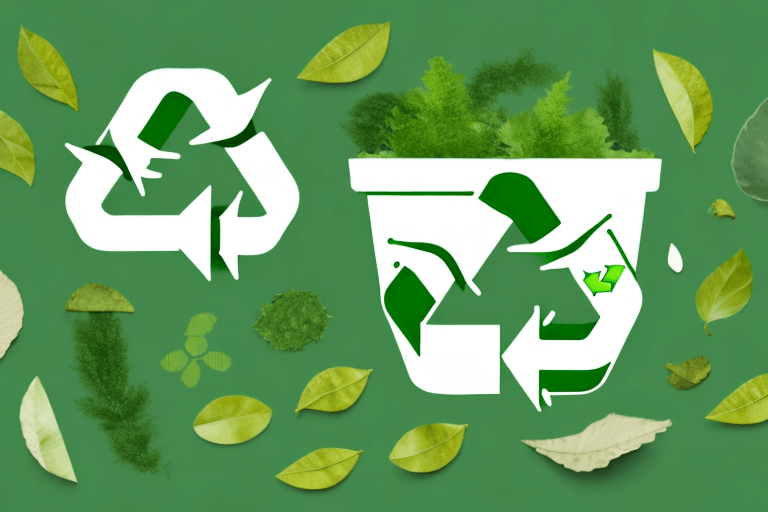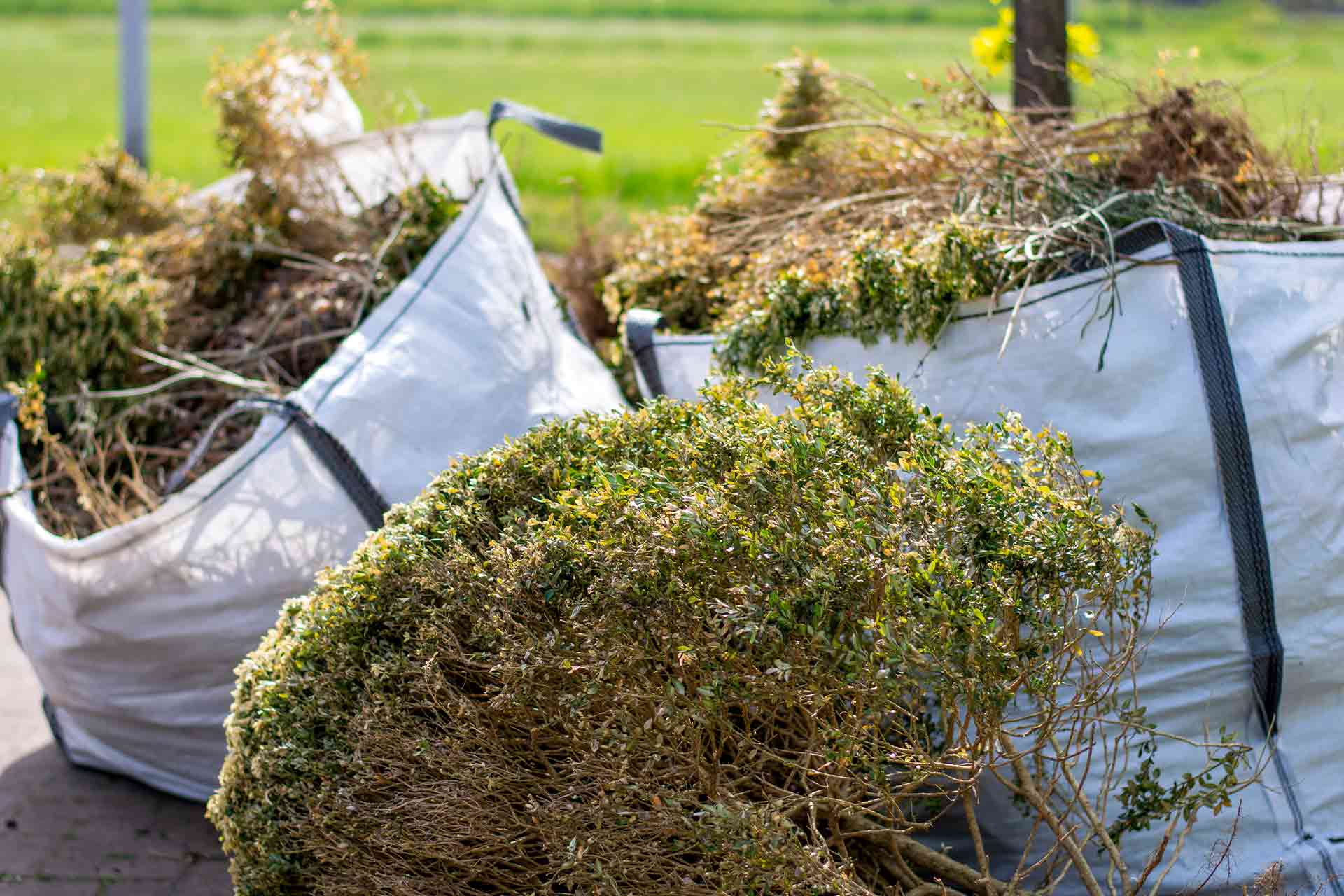A well-maintained yard not only enhances the aesthetic appeal of your property but also contributes to environmental sustainability. One crucial aspect of yard maintenance is green waste removal. While the term “green waste” may seem self-explanatory, it encompasses much more than meets the eye. Understanding the concept of green waste and its importance is the first step towards creating a beautiful and eco-friendly yard.
Understanding Green Waste: What is it and Why is it Important?
Green waste refers to organic materials generated from yard and garden activities, such as grass clippings, leaves, weeds, branches, and other plant debris. While it may seem harmless to let nature take its course and let these materials decompose naturally, there are several reasons why green waste removal near me is important.
Defining Green Waste
Before delving into the reasons behind green waste removal, it is important to define what constitutes green waste. In addition to the aforementioned materials, green waste also includes vegetable and fruit scraps, as well as non-woody plant trimmings.
When we think of green waste, we often focus on the visible components like leaves and branches. However, it is essential to remember that even the seemingly insignificant scraps from our kitchen, such as vegetable peels and fruit cores, also fall under the category of green waste. These small organic materials, when combined with yard trimmings, contribute to the overall volume of green waste that needs to be managed.
Furthermore, non-woody plant trimmings, such as grass clippings and shrub prunings, are an integral part of green waste. These materials, although less noticeable than fallen leaves or branches, play a crucial role in maintaining the health and aesthetics of our outdoor spaces.
See Also: The Hidden Dangers of Untreated Stumps

The Environmental Impact of Green Waste
Green waste, if left unattended, can have detrimental effects on the environment. When organic materials break down, they release methane gas, a potent greenhouse gas that contributes to climate change. This gas traps heat in the atmosphere, leading to rising global temperatures and a host of environmental issues.
By removing green waste and preventing it from decomposing in landfills or other uncontrolled environments, we can significantly reduce the release of methane gas into the atmosphere. Proper management of green waste involves diverting it to composting facilities or utilizing it for mulching and soil enrichment. These practices not only help mitigate climate change but also promote sustainable waste management.
Additionally, decomposing green waste can become a breeding ground for pests and diseases, posing a threat to the well-being of your yard. Without proper removal and disposal, insects and rodents can thrive in the decaying organic matter, potentially causing damage to your plants and compromising the overall health of your garden.
Furthermore, diseases can easily spread among plants if infected green waste is left in close proximity. Fungal spores and bacterial pathogens can survive in the decomposing material, ready to infect nearby plants and trigger widespread damage. Therefore, by promptly removing green waste, we can minimize the risk of pest infestations and disease outbreaks, ensuring the longevity and vitality of our gardens.
The Connection Between Green Waste Removal and Yard Maintenance
Now that we understand what green waste is and why it is important to remove it, let’s explore the direct relationship between green waste removal and yard maintenance.
When it comes to maintaining a beautiful and healthy yard, regular green waste removal plays a crucial role. It goes beyond just keeping your yard tidy; it has a significant impact on the overall health and appearance of your outdoor space.
The Importance of Regular Green Waste Removal
Regular green waste removal is essential to promote a healthy and thriving yard. By removing green waste, you prevent the accumulation of debris that can impede the growth of your plants and grass. Imagine if fallen leaves, branches, and other organic matter were left to pile up in your yard. Not only would it create an unsightly mess, but it would also create a barrier that prevents sunlight and air from reaching the soil and plants beneath.
Furthermore, eliminating green waste reduces the risk of pest infestations, diseases, and weeds, allowing your yard to flourish. Pests and insects are attracted to decaying organic matter, and if left unchecked, they can wreak havoc on your plants, causing irreversible damage. By promptly removing green waste, you minimize the chances of these unwanted visitors making themselves at home in your yard.
How Green Waste Affects the Health of Your Yard
Leaving green waste in your yard can have a negative impact on its overall health. Decomposing organic matter can deplete essential nutrients from the soil, hindering the growth of your plants. As leaves and other plant materials break down, they release nutrients back into the soil. However, if the green waste is not removed, these nutrients can become locked up in the decaying matter, making them unavailable to your plants.
Moreover, the presence of excessive green waste can lead to poor soil drainage, causing waterlogged conditions that are detrimental to the health of your yard. When green waste accumulates, it can create a barrier that prevents proper water drainage. This can result in stagnant water pooling in your yard, leading to root rot, mold, and other water-related issues. Excess moisture can suffocate the roots of your plants, causing them to wither and die.
By regularly removing green waste, you ensure that your yard remains free from these potential problems. Your plants will have access to the nutrients they need to thrive, and the soil will maintain proper drainage, creating an optimal environment for a vibrant and flourishing yard.
Green Waste Removal Techniques
Now that we understand the importance of green waste removal, let’s explore some effective techniques for managing this organic waste.
Green waste, also known as yard waste or organic waste, refers to the biodegradable materials that come from plants and gardens. This includes grass clippings, leaves, branches, and other plant trimmings. Proper management of green waste is essential for maintaining a healthy and sustainable environment.
Composting: Turning Waste into Nutrient-Rich Soil
Composting is a natural and sustainable way to manage green waste. By creating a compost pile or using a compost bin, you can turn your yard waste into nutrient-rich soil amendment. This process not only reduces the amount of waste sent to landfills but also provides you with a valuable resource for fertilizing your plants.
Composting involves the decomposition of organic materials by microorganisms such as bacteria and fungi. These microorganisms break down the green waste into humus, a dark, crumbly substance that is rich in nutrients. The process requires a balance of carbon-rich materials, such as dry leaves or straw, and nitrogen-rich materials, such as grass clippings or kitchen scraps.

Once you have established a compost pile or bin, it is important to maintain the right conditions for decomposition. This includes regularly turning the compost to aerate it, keeping it moist but not waterlogged, and ensuring a proper balance of carbon and nitrogen. With time and patience, you will have a nutrient-rich compost that can be used to improve soil fertility and promote healthy plant growth.
Mulching: A Natural Way to Suppress Weeds and Retain Soil Moisture
Mulching is another effective technique for green waste management. By spreading a layer of mulch over the soil surface, you can suppress weed growth and retain moisture, reducing the need for watering. Additionally, mulch improves soil structure and insulates plant roots, protecting them from extreme temperatures.
There are various types of mulch available, including organic mulch made from green waste. This type of mulch can be obtained from tree trimmings, shredded leaves, or grass clippings. When applied to the soil, organic mulch decomposes slowly, releasing nutrients into the soil and improving its fertility.
In addition to its weed-suppressing and moisture-retaining properties, mulch also helps regulate soil temperature. During hot summer months, it acts as a protective layer, keeping the soil cooler and preventing water evaporation. In colder seasons, it acts as an insulator, keeping the soil warmer and protecting plant roots from frost.
When using mulch, it is important to apply it correctly. The layer should be thick enough to provide adequate coverage but not too thick to suffocate the plants. It is recommended to spread a layer of mulch about 2-3 inches deep around the base of plants, leaving a small gap around the stem to prevent rotting.
By incorporating composting and mulching into your green waste management practices, you can contribute to a healthier environment and create a more sustainable garden. These techniques not only reduce waste but also provide valuable benefits to your plants and soil. So, start composting and mulching today to make the most of your green waste!
Professional Green Waste Removal Services
While DIY techniques for green waste removal are feasible for smaller yards, larger properties or more extensive projects may require the assistance of professionals. Knowing when to consider hiring a professional green waste removal service is crucial.
When it comes to maintaining a beautiful and well-kept yard, green waste removal plays a vital role. From fallen leaves to tree trimmings, green waste can accumulate quickly, making it necessary to find an efficient and effective way to dispose of it. While some homeowners may opt for DIY methods, there are instances where seeking professional assistance is the best course of action.
One scenario where hiring a professional green waste removal service is beneficial is when you have a significant amount of green waste. Large properties or projects that involve extensive landscaping can generate a substantial volume of waste that may overwhelm DIY efforts. In such cases, professionals have the expertise, tools, and resources to handle the removal process efficiently.
Another factor to consider is the time and equipment required for green waste removal. If you find yourself lacking the necessary time or the proper equipment to handle the task, it may be wise to enlist the help of professionals. They can save you valuable time and ensure that the waste is disposed of properly.
When to Consider Hiring a Professional
If you have a significant amount of green waste or lack the necessary time and equipment to handle the removal process, it may be wise to seek professional assistance. They have the expertise, tools, and resources to efficiently dispose of green waste while adhering to local regulations.
Moreover, professional green waste removal services offer convenience and peace of mind. Instead of spending your weekends hauling and disposing of waste, you can focus on enjoying your yard and engaging in activities you love. The professionals will take care of the entire process, from collection to disposal, leaving you with a clean and tidy outdoor space.
Furthermore, hiring professionals ensures that the green waste is disposed of in an environmentally friendly manner. Reputable companies prioritize sustainability and adhere to proper waste disposal methods. They will recycle or compost the waste whenever possible, minimizing the impact on the environment.

What to Look for in a Green Waste Removal Service
When choosing a green waste removal service, there are a few factors to consider. Firstly, ensure that the company is licensed, insured, and environmentally responsible. This guarantees that they operate legally and have the necessary insurance coverage in case of any unforeseen incidents.
It is also beneficial to inquire about their waste disposal methods to ensure they align with your sustainable values. Some companies have partnerships with recycling facilities or composting centers, ensuring that the green waste is diverted from landfills and put to good use. By choosing a service that prioritizes sustainability, you contribute to the overall well-being of the environment.
Additionally, read reviews and testimonials from previous customers to gauge the quality of service provided by the company. Positive feedback and recommendations can give you confidence in your decision to hire a particular green waste removal service.
In conclusion, professional green waste removal services offer numerous advantages for homeowners with larger yards or extensive landscaping projects. They have the expertise, tools, and resources to efficiently handle the removal process while adhering to local regulations. By choosing a licensed, insured, and environmentally responsible company, you can ensure that your green waste is disposed of properly and sustainably. So, the next time you find yourself overwhelmed with green waste, consider hiring professionals to make the process hassle-free and environmentally friendly.
DIY Green Waste Removal: Tips and Tricks
If you prefer a hands-on approach to green waste removal, there are several tips and tricks to make the process safe and efficient.
Safe and Effective Green Waste Removal at Home
Start by investing in appropriate safety gear, such as gloves, goggles, and sturdy shoes. It is also essential to use ergonomic tools that minimize strain on your body. Additionally, consider segregating green waste into smaller piles for easier handling and disposal.
Tools and Equipment for DIY Green Waste Removal
Equipping yourself with the right tools can make the green waste removal process much smoother. Some essential tools include pruners, shears, rakes, and wheelbarrows. These tools will help you trim and gather green waste efficiently.
In conclusion, green waste removal plays a vital role in yard maintenance. Understanding what constitutes green waste and its impacts on the environment and your yard’s health is the first step. Whether you opt for DIY techniques such as composting and mulching, or hire professional services, regular green waste removal is essential for creating a clean, healthy, and sustainable yard.

